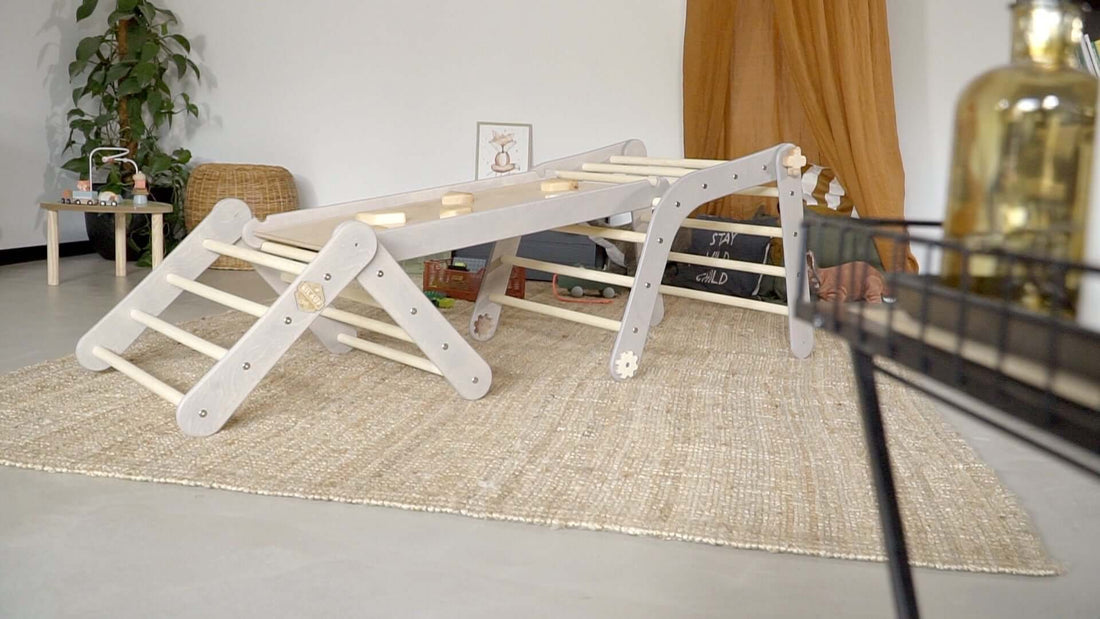
Climbing triangle - you need to know that
shares
The climbing triangle, also known as the Pikler triangle, is a child-centred approach to early childhood education and care . It was developed by the Hungarian pediatrician Dr. Emmi Pikler developed over 100 years ago and has proven to be helpful for the holistic development of children.
Below you will find a collection of questions and answers about the climbing triangle
Is a Pikler climbing triangle worth it?
At what age can a child use the climbing triangle?
In principle, climbing triangles are suitable for children from 6 months to approx. 5 years
How much weight does a climbing triangle hold?
The Pikler triangle is typically designed to hold up to 50 kilograms , making it safe for multiple children to share. It's also foldable for easy storage, but sturdy enough to keep your child safe.

How safe is a Pikler climbing triangle?
When used in a supervised situation, Pikler triangles are safe. However, unsupervised play is where most accidents happen. Because of this, it is important to always use Pikler triangles in a safe and supervised environment. In principle, climbing triangles must have a valid CE seal so that they are approved for sale in Germany.
What is a climbing triangle for?
The Pikler triangle is a device that allows children to climb, jump and slide . It supports the child in the development of motor skills. It also stimulates children's imagination . As children develop, they will interpret the frame in many different ways and not just climb, jump and slide!
Is a Pikler triangle also Montessori?
The Pikler triangle is not specifically associated with Montessori , but it is based on the work of Dr. Pikler, who was a Montessori teacher and researcher. dr Pikler believed in learning through play, apart from her parents, and the Pikler triangle is a diagram that illustrates this philosophy.
What material is a climbing triangle made of?
As a rule, the climbing triangles and their side parts are made of birch multiplex wood and the rungs are made of ash wood .
How much does a climbing triangle cost?
Here, of course, it all depends on the individual construction. High-quality climbing triangles usually start at around €120 - €150 .
Is a mat necessary under the climbing triangle?
There are a few different things that can be placed under a Pikler triangle to make it more stable and comfortable for the child. One option is a rug or rug. This makes it stable but still slightly cushioned.
Another option is foam padding , which can add extra cushioning and comfort. Finally, some parents may choose to use a blanket or towel to create a softer surface for the child to lie on.
How do I get my child to use the climbing triangle?
Every baby develops at their own pace. However , some tips for introducing a Pikler triangle are:
- Place the triangle in an area where your baby can see and explore.
- Show your baby how to climb up and down the triangle.
- Encourage your baby to explore the triangle for themselves.
- Make sure the triangle is always safe for your baby.
Here you can find our large selection of climbing triangles !
